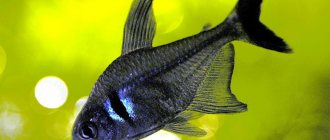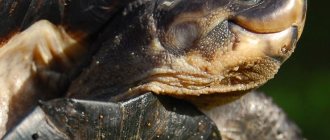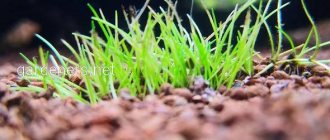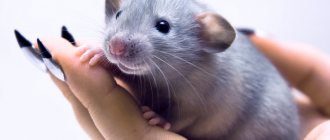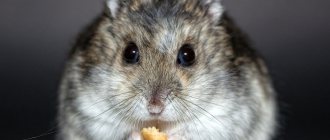Many people are interested in turtles due to the uniqueness of their way of life. One of the varieties of these reptiles is the marsh turtle. This is a wild animal, but if certain conditions are met, it can be made a true friend. It is important to understand what living conditions are optimal for it in the wild - this will help to understand the needs of the animal and ensure their satisfaction.
Description
The European marsh turtle has an oval or rounded carapace, smooth, usually black or yellow-green in color. It is dotted with many small yellow or white spots, sometimes forming rays or lines. The shell is smooth when wet and shines in the sun, and becomes more matte as it dries. The head is large, slightly pointed, without a beak. The skin on the head is dark, often black, with small spots of yellow or white. The paws are dark, also with light spots on them.
Emys orbicularis has several subspecies that differ in color, size or detail, but most often in habitat. For example, the Sicilian marsh turtle (Emys (orbicularis) trinacris) with a striking yellow-green carapace and the same skin color. And Emys orbicularis orbicularis, which lives in Russia and Ukraine, is almost completely black.
Adult marsh turtles reach a carapace size of up to 35 cm and a weight of up to 1.5 kg. Although, when kept at home, they are usually smaller, despite the fact that the subspecies living in Russia is one of the largest.
The European marsh turtle is very similar to the American marsh turtle (Emydoidea blandingii) in appearance and habits. They were even classified for a long time in the genus Emys. However, further study led to the fact that these two species were divided according to differences in the structure of the internal skeleton.
How long does a marsh turtle live? There is no consensus on the life expectancy of a marsh turtle. But everyone agrees that she is a long-liver. The numbers range from 30-50 years to 100.
Habitat
Territory of Russia: from the Smolensk region at the border with Belarus and Ukraine in the south, in the Caspian lowland, on the middle Volga, in the upper and lower reaches of the Don, in the Caucasus. Belarus, the left bank of the Ural River, Lithuania, North-West Africa, Southern and Central Europe, Northern Iran, Turkey, the Urals, the Caucasus, Transcaucasia. They live in swampy places, ponds, lakes, and in addition they can often be found in quiet river backwaters with a gentle bank and muddy bottom, however, under a number of conditions: there must be open places on the shore where they can bask in the sun for a long time.
General principles of keeping at home
Naturally, a large reptile needs a lot of space. This is why (and for a number of other reasons) keeping representatives of Emys orbicularis is considered relatively difficult, which does not, however, affect the growing popularity of marsh turtles.
To live in captivity, these animals should be provided with an aquaterrarium. This means that the aquarium should have 2 zones - water and land. The capacity of such a “dwelling” should not be less than 100 liters; otherwise the turtle will feel cramped.
The “wet” zone occupies most of the aquaterrarium, and an island of land should be placed in one side of the terrarium. This island can be made from stones, fastening them together with aquarium glue. For safe and easy access of your pet to land, it is recommended to make a flat plastic bridge.
In an aquaterrarium with sandy or pebble soil, it is recommended to plant aquatic plants, the foliage of which will sometimes act as a good nutritional herbal supplement.
Age determination
The age of swamp turtles, like other species, is determined by the number of growth rings on the carapace. It should be taken into account that in the first or second year of life, 1 ring appears within 3-6 months. After two years, one ring is equivalent to one year of existence.
In nature, growth occurs noticeably faster than with household maintenance. As a result, by the thickness of the last (outer) rings it is easy and simple to determine how many years the turtle spent in captivity.
Water conditions
- Water level
The aquaterrarium should be maintained at a level of at least 25 cm, as the turtle must be able to swim freely.
- Required water temperature approx. +25°C
Under natural conditions, when the temperature drops, turtles hibernate, but in home aquaterrariums with constant water parameters, this is not observed. A water heater is required if the room temperature is lower than specified.
- Cleanliness is the key to health
Experts especially note the importance of monitoring the cleanliness of the aquatic environment, since the turtle will get sick in dirty water. This question is very relevant: animals not only defecate while floating, but also consume food in water.
It would seem that an effective powerful internal filter can solve the problem of cleaning aqua, but the fact is that in some cases large predatory turtles try to attack this object, perceiving it as a threat.
In this case, water purification should be carried out by replacing it in a volume of at least 50% every 2 days.
However, if baby turtles are released into an aquaterrarium, then during their life and development they are quite capable of getting used to the presence of a working internal filter
HEATING
Natural sunlight is best, and it is advisable to expose baby turtles to direct sunlight during the summer months. However, this is not always possible and an analogue of sunlight must be created artificially. To do this, in an aquaterrarium, above land, an incandescent lamp and a special lamp with UV rays, an ultraviolet lamp for reptiles (10% UVB), are placed.
Moreover, the height must be at least 20 cm so that the animal does not get burned. The temperature on land, under the lamp should be 30-32C, and the length of daylight should be at least 12 hours. In nature, they spend the winter and hibernate, but in captivity they do not do this and there is no need to force them! Her home conditions allow her to be active throughout the year; it’s not winter when there’s nothing to eat.
Protection measures
This species is listed in the Red Book of the International Union for Conservation of Nature (RL/nt), in provision II of the Berne Convention, and in the Red Book of the Republic of Bashkortostan. The population of this turtle species is in danger of extinction. Recent studies show that it is being replaced by a related species such as the American marsh turtle.
The main reasons for the decline in the number of the species are fishermen, land reclamation, and urbanization. A person finds marsh turtles near bodies of water or far from them. Most often, these are females who are looking for a good place to lay eggs at the mouths of rivers, and moving away from their usual habitat for a number of kilometers. People don't realize the damage they cause to nature when they take a turtle into their home. Even the best conditions in captivity can never replace natural ones. And very often turtles are kept in basins or, by and large, behind a closet, under a radiator, etc. When treated this way, the animal slowly dies over many years. Irreversible pathological processes occur in the turtle's body. For example: dehydration (the turtle dries out, the skull bones stand out on the head, the epidermis begins to adhere to the bones), loss of swimming membranes, overgrowth of the choanae, which can cause respiratory pathology, respiratory diseases, lack of heat leads to serious gastrointestinal diseases, various kidney pathologies, drying out and loss of the tip of the tail.
Land zone
It is needed so that reptiles can rest, warm up and dry out their shells.
The optimal temperature in the area of a land island is considered to be 30–35 degrees above zero, which is achieved by installing an ordinary incandescent lamp over this area.
It should be placed at a height of 25–30 cm from the surface of the land so that the animal does not receive burns. In addition, you should install a small ultraviolet lamp.
The fact is that UV rays promote the production of calcium in the turtle’s body, which is vital for the proper formation of the shell.
Many experts recommend feeding the animal on such an island, gradually accustoming it to this. If you achieve this “land” method of feeding, the water will maintain its purity longer.
Behavior
These reptiles are active during the day and sleep at night. To sleep, they go down to the bottom of the reservoir in which they live. During the day they prefer dry land to warm themselves. They are capable of moving several kilometers away from a body of water. They cannot stay in the water all the time - they need air to breathe, so the animals often float to the surface. They can survive without oxygen for about two hours. With low activity, the need for it disappears completely, since anaerobic respiration is activated.
These turtles swim well and quickly. When a threat is detected, they tend to hide in the grass or coastal mud. On land, the reptile also moves quite quickly.
Features of nutrition in captivity
The main diet of a predatory turtle consists of protein food.
- You can and should give her pieces of fish (for example, hake, cod or pollock), shrimp, live or dried worms, and mussels.
- Beef liver will also work, but it can be served no more than once a week.
- Plant foods play the role of a vitamin supplement. Chopped and scalded leaves of spinach, lettuce, plantain or dandelion are quite suitable as such an additive.
There are many branded ready-made foods, including Reptomin from Tetra or Nutrafin, produced by Hagen. There are also ready-made balanced vitamin food supplements on sale (from Tetra or Hartz, for example), which are not recommended to be neglected. These additives have a positive effect on the formation of the skeleton and shell of reptiles.
Thus, keeping a marsh turtle cannot be called simple and easy. But all the listed care features and troubles will more than pay off when your pet gets used to you. The animal will trustingly rush to get out of the water in order to get pieces of tasty food from the hands of its owners. As a rule, the turtle gets so used to people that it does not hide its head under its shell, allowing itself to be stroked and even picked up.
APPEAL
Very smart, they quickly understand that their owner is feeding them and will rush to you in the hope of feeding them. However, at this moment they are aggressive and you need to be careful. Like all turtles, they are cunning and can bite, and quite painfully.
You need to handle them carefully and generally touch them less often. It is better not to give it to children, as they pose a mutual danger to each other. It is best to keep her alone! Swamp turtles are aggressive towards each other and even gnaw off their tails. And other aquatic species are either competitors or food for them, this also applies to fish.
Feeding
What to feed a marsh turtle ? The main thing is not what, but how. Turtles are very aggressive when feeding!
It feeds on fish, shrimp, beef heart, liver, chicken heart, frogs, worms, crickets, mice, artificial food, and snails.
The best food is fish, for example, you can put live fish, guppies, directly into the aquarium. Juveniles are fed every day, and adult turtles every two to three days.
They are very greedy for food and easily overeat.
For normal development, turtles need vitamins and calcium. Usually artificial food contains everything a turtle needs, so adding food from a pet store to the diet will not be out of place.
And yes, they need sunlight to absorb calcium and produce vitamin B3. So don’t forget about special lamps and heating.
Terrarium
The terrarium must be sufficiently free (120–150 liters, 120 liters is at least for 1 individual), which consists of two halves - water and land, with a ladder between them. It is preferable to have a pond with a depth of up to 10 cm for small specimens, for large ones 15–20 cm. An ultraviolet lamp and an incandescent heating lamp for reptiles (10% UVB) are placed above the dry part of the territory at a height of at least 20 cm.
There must be a water filter and a water heater (a heater, however, is not required if the water temperature does not drop below 24-26 degrees, in fact, this is what it should be). On land, the air temperature in front of the lamp is 30-33 C. Turtle in the cold period of the year in natural conditions goes into hibernation, but at home at a temperature of 22–25 ° C this fact does not happen.
To prevent the water from becoming polluted, the turtle is transplanted into a basin or bathtub and fed there, and then put back into the aquarium.
Interesting Facts
- Turtles are afraid of surprises and always try to hide from them in the saving water element, sometimes even at the risk of their lives. In the Caucasus, turtles were seen jumping from a three-meter height into the water out of fear.
- Turtles have a sensitive sense of smell. They quickly found pieces of meat wrapped in paper in the water.
- The male's sperm is stored for a very long time; it can be kept in the female's genital tract for about a year or more. Therefore, an emida may unexpectedly lay eggs after six or more months of captivity. Don’t be surprised, this is not a miracle, the fertilization trigger just worked.
- In 2013, at the Zoological Museum of the Dnepropetrovsk Agrarian University, several marsh turtles hatched from eggs stored on shelves as exhibits. How they survived in such unimaginable conditions for incubation is unclear. This event really looks like a small miracle.
- It is interesting that in turtles, sex separation depends on the ambient temperature - if incubation takes place at temperatures above +30º C, only “girls” emerge from the eggs, and below +27º C – only “boys”. In the interval between these figures there is a balance between the sexes.
- In the Middle Ages in Europe, turtles were considered a delicacy and were often used as food. The church considered their meat lean, like fish.
- There are monuments to the marsh turtle in Latvia. In the city of Daugavpils, sculptor Ivo Folkmanis built a monument from light African granite in 2009, after a year of work. And in Jurmala, a bronze sculpture on the seashore has been standing for more than 20 years, since 1995. Both figures are created in honor of the large population of these turtles in the country.
Additional information
Scientists identify 13 subspecies of the marsh turtle in nature, but only 5 are found in Russia. In the summer, turtles live near bodies of water and, if an enemy appears, they rush into the water and dive to the bottom, often burying themselves in silt. Swamp turtles hibernate in the fall, in October, thereby waiting out the winter at the bottom of reservoirs.
Adults and large
individuals can at times be hostile and try to bite. It is necessary to take them by the edge of the back of the shell, since the head on the long neck has great physical activity. The bite can be very painful, since, having grabbed the soft part of the hand with its mouth, the turtle convulsively clenches its jaws several times. However, if you treat this animal well, they instantly become tamed, stop hiding their head under their shell, and, on the contrary, pull it towards the owner-breadwinner.
Reproduction of swamp turtles
This reptile reaches sexual maturity at approximately 6-8 years of age, when their shell acquires a length of 10-12 cm. Under natural conditions, the mating season begins in the spring. Males are characterized by aggressive behavior and are capable of pursuing females. Their mating games are quite dynamic and involve sniffing the tail and paws. Mating can take place both in water and on the shore.
The female lays eggs after about 1-2 months. During this period, they need increased nutrition, and the food should contain more vitamins, protein and calcium than usual. Also, they need higher air and water temperatures - this will ensure the absorption of nutrients. A few days before laying eggs, the female stops eating - this sign is used to determine that she will soon lay eggs.
The female places the eggs in the ground, digging small holes 10 cm deep. During the period from May to June, the female makes about 3 clutches. Eggs have a regular elongated shape and a white shell. They are small (about 3x2 cm), weigh about 8 g. The number of eggs in a clutch is from 5 to 10 pieces. After 2-3 months, the cubs hatch from them. Their weight is 5 g, size is 2.4-2.5 cm. They have a yolk sac on their belly. The color of the shell is most often dark brown, decorated with yellow lines.
The kids spend the winter near the masonry, digging small holes. In the spring they leave their shelters and begin an independent life.
Characteristics of this species
The European marsh turtle is characterized by a brown-brown or dark olive oval shell (carapace) with diverging lines or bright yellow dots, paws with sharp claws (4 claws on the hind legs and 5 on the front) and moderately developed swimming membranes, a long tail . The head and paws are decorated with yellow spots. The plastron is lighter, ranging in color from yellow to dark brown with black.
The color of the shell can change as it grows and forms. Newborn turtles are almost entirely black with a yellow rim along the edges of the plastron and carapace. Turtles lighten with age and become covered with a bright yellow pattern, the plastron also turns yellow, and the carapace changes from brown to dark olive. Depending on the subspecies, the length of the shell reaches 18–25 cm, and males are usually smaller than females. In nature they live up to 120 years.
Habitat
The European marsh turtle is common in temperate climates. Lives in Central and Southern Europe, Western Asia, America, Western Europe (Belarus, Ukraine, Lithuania), North-West Africa. In Russia, it is distributed in the warm temperate climate zone of the European part. The habitat ranges from the Smolensk region at the border with Belarus, Ukraine to the south (Caucasus, Caspian Lowland, Transcaucasia), in the middle Volga, in the upper and lower reaches of the Don and the left bank of the Ural River. The turtle lives on slowly flowing rivers, ponds, and lakes with flat banks and muddy bottoms.

